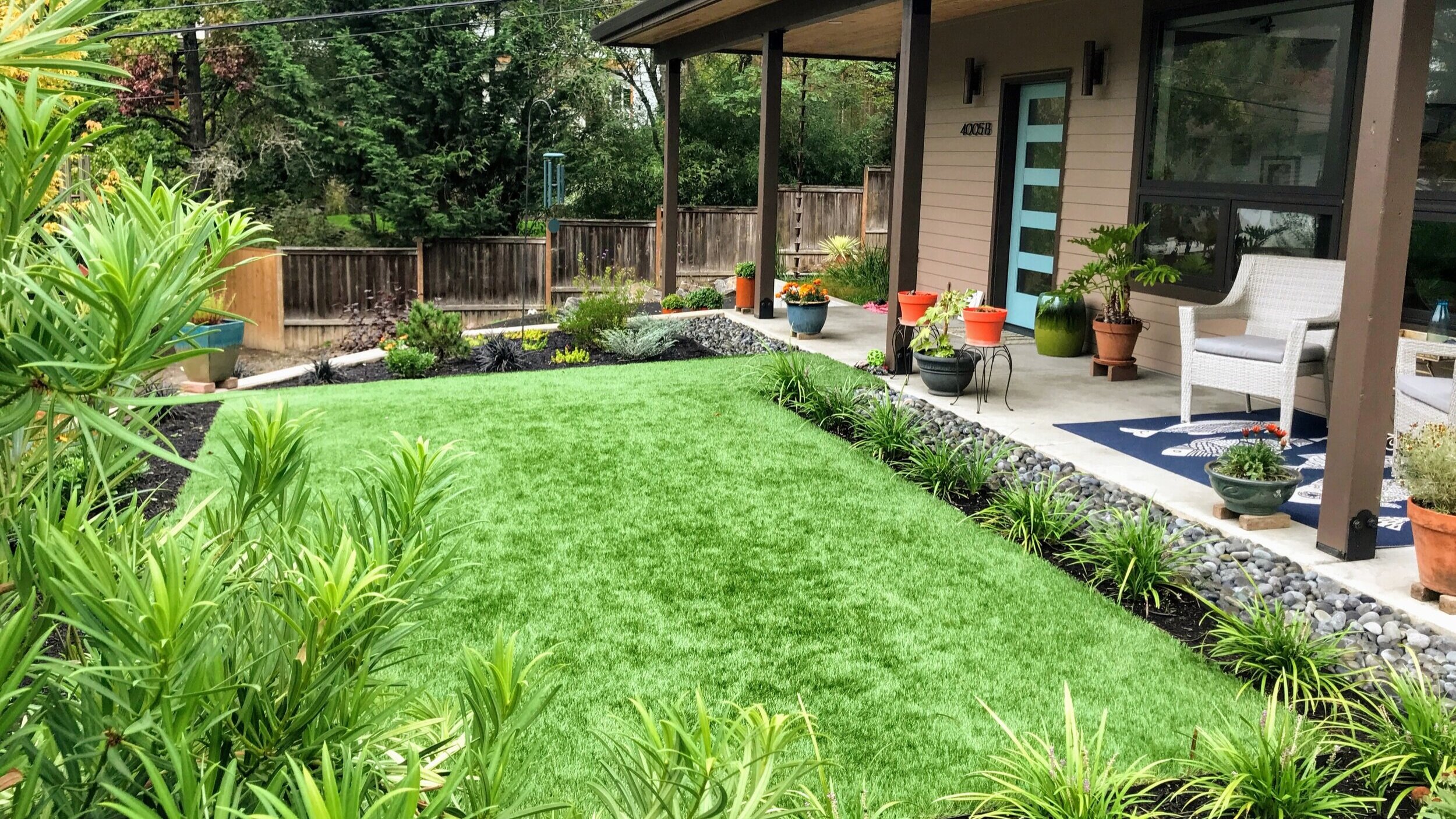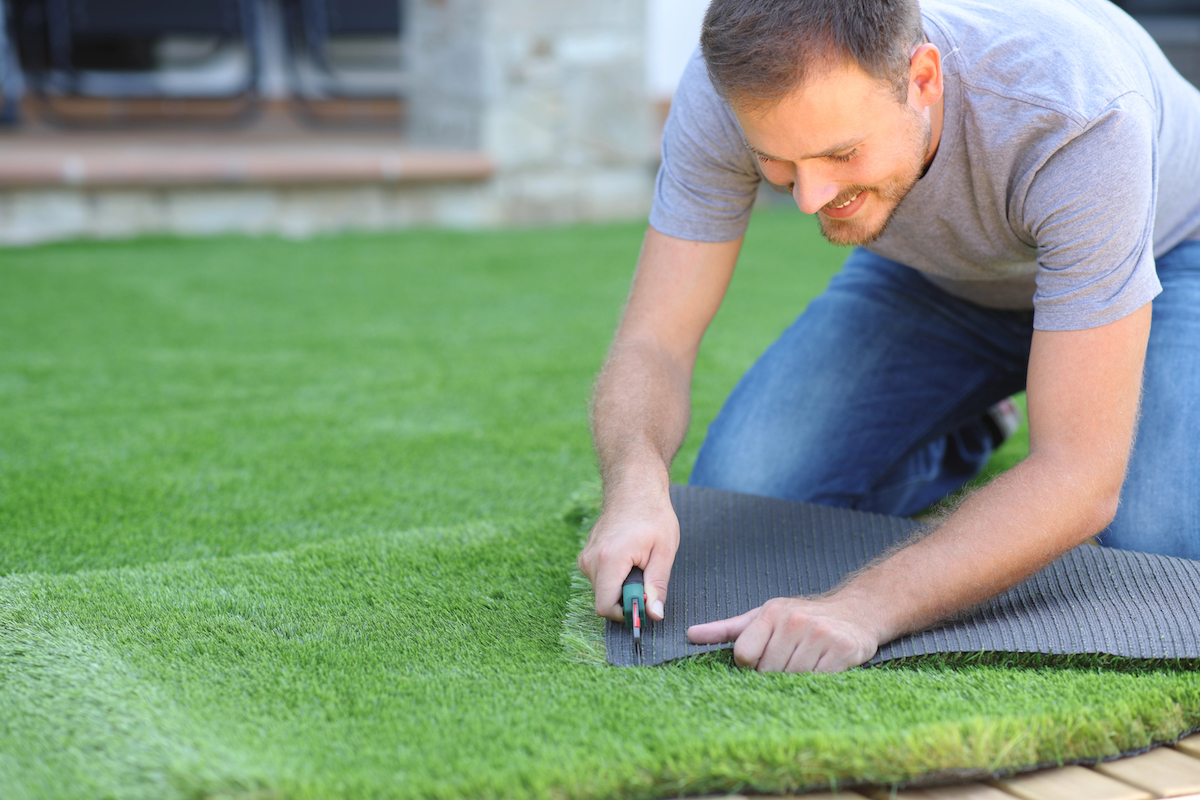Eco-Friendly Arizona Artificial Turf for a Year-Round Lush Green Lawn
Eco-Friendly Arizona Artificial Turf for a Year-Round Lush Green Lawn
Blog Article
Look Into the Environmental Benefits of Opting for Synthetic Grass Solutions
The fostering of artificial grass options presents an engaging chance to attend to pressing ecological challenges. By considerably decreasing water use and lessening the application of dangerous chemicals, these options not just promote lasting landscaping however also shield neighborhood ecosystems.
Water Preservation Advantages
One of the most considerable advantages of synthetic grass is its capacity to save water. In comparison, artificial turf does not need watering, significantly reducing the total need for water resources.
By getting rid of the demand for routine watering, synthetic lawn adds to sustainable landscape practices and assists alleviate the environmental influence of too much water consumption. Moreover, the conservation of water includes the decrease of drainage, which can cause soil erosion and river pollution.
Furthermore, the setup of synthetic grass enables towns and property owners to assign water sources more efficiently, concentrating on essential uses such as alcohol consumption water and agriculture. The shift in the direction of synthetic turf not only promotes responsible water use yet also straightens with more comprehensive ecological objectives focused on protecting natural deposits.
As areas significantly focus on sustainability, the water conservation advantages of synthetic grass offer a compelling instance for its fostering in commercial and household landscaping jobs.
Reduced Chemical Use
The shift to fabricated grass significantly lowers the dependence on chemical treatments commonly utilized in natural turf maintenance. Conventional turf administration generally involves the application of plant foods, chemicals, and herbicides to advertise growth and control bugs. These chemicals can position risks to human wellness, local wildlife, and the atmosphere, adding to soil and water contamination.
On the other hand, artificial turf removes the requirement for these hazardous substances. As soon as set up, it needs minimal maintenance, mainly consisting of regular cleansing and irregular infill replenishment. This decrease in chemical use not just profits the instant setting yet additionally adds to broader eco-friendly stability. By reducing the launch of artificial substances right into the ecosystem, synthetic grass advertises healthier dirt and water supply.
Moreover, the lack of chemical drainage connected with man-made grass installations helps shield regional rivers from pollution, sustaining marine life and keeping biodiversity. Artificial turf companies phoenix. As neighborhoods progressively focus on lasting practices, selecting fabricated grass provides a practical solution that straightens with ecological conservation objectives. Through this shift, property owners can delight in rich environment-friendly areas without compromising environmental health, leading the way for an extra sustainable future
Reduced Carbon Impact

In addition, the setup of synthetic grass can cause substantial water preservation. Natural yards need considerable quantities of water for irrigation, which not just includes in the carbon footprint related to water removal and therapy but likewise pressures local water sources. In contrast, synthetic grass needs minimal upkeep, needing no watering, thereby significantly decreasing water usage and its associated power prices.
Additionally, the durability of synthetic grass adds to its reduced carbon effect. With a life expectancy of approximately 15 years or more, the requirement for frequent replacements is lessened, causing less waste and reduced energy usage in production and disposing of traditional turf alternatives. In general, synthetic grass presents a lasting option for ecologically conscious landscape design.
Environment Preservation
Habitat preservation is an important consideration in the argument over landscaping selections, specifically when contrasting synthetic grass to natural lawn. Natural lawn yards typically require considerable upkeep, including using herbicides, fertilizers, and chemicals, which can negatively impact local environments. These chemicals can seep into the dirt and waterways, hurting indigenous vegetation and fauna and interfering with regional environments.
In comparison, artificial lawn provides read review a possibility to lower the eco-friendly impact of landscaping. By deciding for artificial turf, homeowners can reduce the disturbance of all-natural environments connected with conventional grass treatment practices. Man-made lawn removes the demand for hazardous chemicals, therefore shielding close-by wild animals and maintaining the integrity of bordering ecological communities. Additionally, the setup of synthetic grass can result in the conversion of previous turf locations into even more biodiverse landscapes, such as pollinator yards or native plant locations, which can support regional wildlife.
Ultimately, the change to synthetic grass not only conserves water and decreases upkeep efforts however additionally fosters a much more harmonious connection in between human activities and the native environment, promoting habitat preservation at the same time.
Long-Term Sustainability
Lasting sustainability is an important consider reviewing the benefits of synthetic grass over traditional grass yards. Among the most substantial advantages of synthetic turf is its durability; it can last approximately 15-20 years with very little upkeep, whereas natural turf calls for regular reseeding and substitute. This long life decreases the requirement for consistent resources, such as water, plant foods, and chemicals, which are vital for maintaining a healthy turf lawn.
Furthermore, man-made turf adds to a reduction in carbon emissions connected with lawn treatment devices. Traditional yards typically call for gas-powered mowers, leaners, and blowers, every one of which add to air contamination. Turf installation phoenix az. On the other hand, fabricated turf removes the need for such tools, advertising a cleaner environment
In addition, the manufacturing of synthetic lawn increasingly makes use of recycled materials, enhancing its sustainability account. As manufacturers embrace eco-friendly methods, the environmental impact of synthetic grass proceeds to reduce.

Final Thought
The fostering of man-made Website lawn services presents substantial ecological benefits, including considerable water preservation, minimized reliance on damaging chemicals, and a lower carbon impact. Furthermore, man-made grass aids in preserving natural habitats by lessening land disruption and promoting long-term sustainability with the use of resilient products. Collectively, these elements highlight the potential of fabricated lawn to add positively to ecological wellness and use a practical option to traditional landscaping methods in a significantly resource-conscious world.
In comparison, fabricated grass does not need watering, considerably decreasing the general demand for water resources. By minimizing the release of artificial substances into the community, fabricated grass promotes much healthier dirt and water systems.
Furthermore, the installment of artificial turf can result in significant water preservation. In comparison, fabricated turf requires minimal upkeep, needing no watering, consequently significantly minimizing water use and its linked energy prices.

Report this page